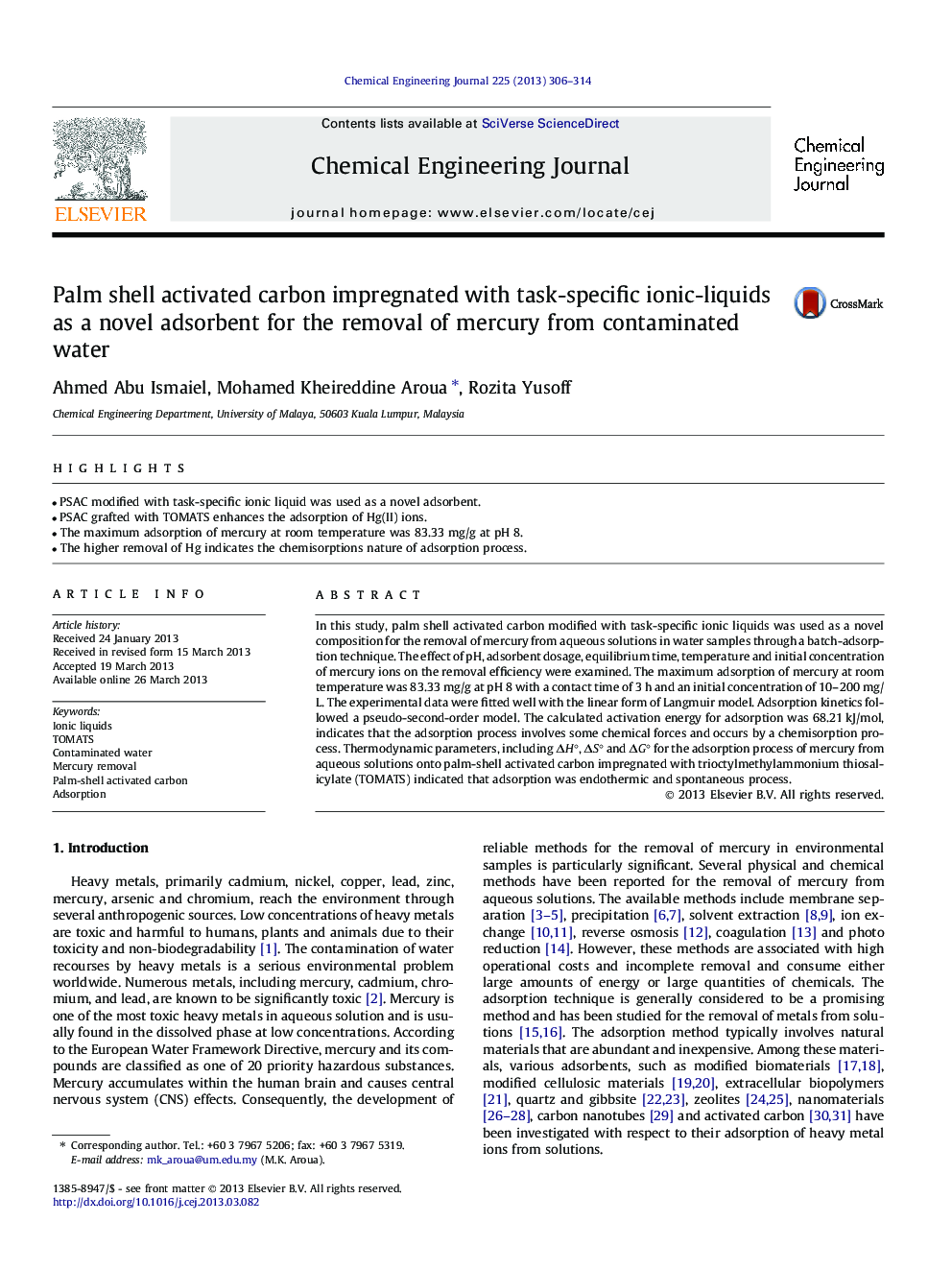| Article ID | Journal | Published Year | Pages | File Type |
|---|---|---|---|---|
| 148680 | Chemical Engineering Journal | 2013 | 9 Pages |
•PSAC modified with task-specific ionic liquid was used as a novel adsorbent.•PSAC grafted with TOMATS enhances the adsorption of Hg(II) ions.•The maximum adsorption of mercury at room temperature was 83.33 mg/g at pH 8.•The higher removal of Hg indicates the chemisorptions nature of adsorption process.
In this study, palm shell activated carbon modified with task-specific ionic liquids was used as a novel composition for the removal of mercury from aqueous solutions in water samples through a batch-adsorption technique. The effect of pH, adsorbent dosage, equilibrium time, temperature and initial concentration of mercury ions on the removal efficiency were examined. The maximum adsorption of mercury at room temperature was 83.33 mg/g at pH 8 with a contact time of 3 h and an initial concentration of 10–200 mg/L. The experimental data were fitted well with the linear form of Langmuir model. Adsorption kinetics followed a pseudo-second-order model. The calculated activation energy for adsorption was 68.21 kJ/mol, indicates that the adsorption process involves some chemical forces and occurs by a chemisorption process. Thermodynamic parameters, including ΔH°, ΔS° and ΔG° for the adsorption process of mercury from aqueous solutions onto palm-shell activated carbon impregnated with trioctylmethylammonium thiosalicylate (TOMATS) indicated that adsorption was endothermic and spontaneous process.
